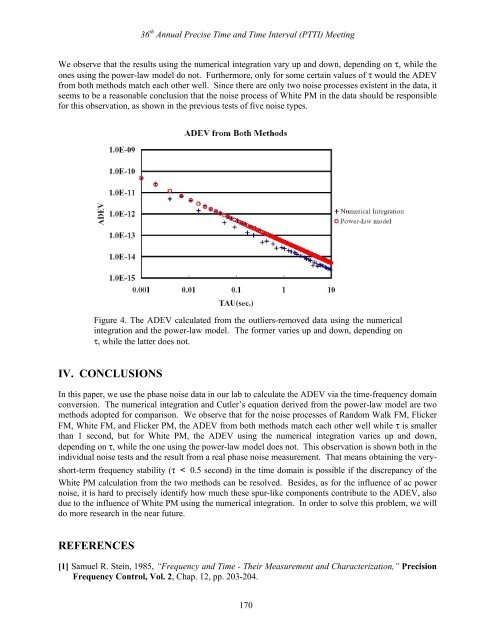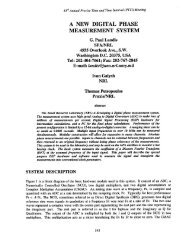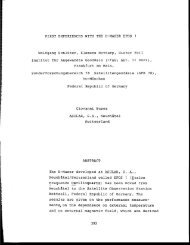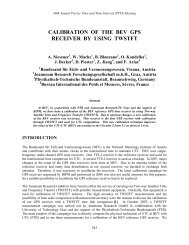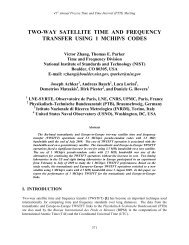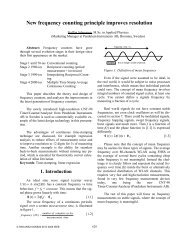allan variance estimated by phase noise measurements - PTTI
allan variance estimated by phase noise measurements - PTTI
allan variance estimated by phase noise measurements - PTTI
Create successful ePaper yourself
Turn your PDF publications into a flip-book with our unique Google optimized e-Paper software.
36 th Annual Precise Time and Time Interval (<strong>PTTI</strong>) Meeting<br />
We observe that the results using the numerical integration vary up and down, depending on τ, while the<br />
ones using the power-law model do not. Furthermore, only for some certain values of τ would the ADEV<br />
from both methods match each other well. Since there are only two <strong>noise</strong> processes existent in the data, it<br />
seems to be a reasonable conclusion that the <strong>noise</strong> process of White PM in the data should be responsible<br />
for this observation, as shown in the previous tests of five <strong>noise</strong> types.<br />
Figure 4. The ADEV calculated from the outliers-removed data using the numerical<br />
integration and the power-law model. The former varies up and down, depending on<br />
τ, while the latter does not.<br />
IV. CONCLUSIONS<br />
In this paper, we use the <strong>phase</strong> <strong>noise</strong> data in our lab to calculate the ADEV via the time-frequency domain<br />
conversion. The numerical integration and Cutler’s equation derived from the power-law model are two<br />
methods adopted for comparison. We observe that for the <strong>noise</strong> processes of Random Walk FM, Flicker<br />
FM, White FM, and Flicker PM, the ADEV from both methods match each other well while τ is smaller<br />
than 1 second, but for White PM, the ADEV using the numerical integration varies up and down,<br />
depending on τ, while the one using the power-law model does not. This observation is shown both in the<br />
individual <strong>noise</strong> tests and the result from a real <strong>phase</strong> <strong>noise</strong> measurement. That means obtaining the veryshort-term<br />
frequency stability (τ < 0.5 second) in the time domain is possible if the discrepancy of the<br />
White PM calculation from the two methods can be resolved. Besides, as for the influence of ac power<br />
<strong>noise</strong>, it is hard to precisely identify how much these spur-like components contribute to the ADEV, also<br />
due to the influence of White PM using the numerical integration. In order to solve this problem, we will<br />
do more research in the near future.<br />
REFERENCES<br />
[1] Samuel R. Stein, 1985, “Frequency and Time - Their Measurement and Characterization,” Precision<br />
Frequency Control, Vol. 2, Chap. 12, pp. 203-204.<br />
170


